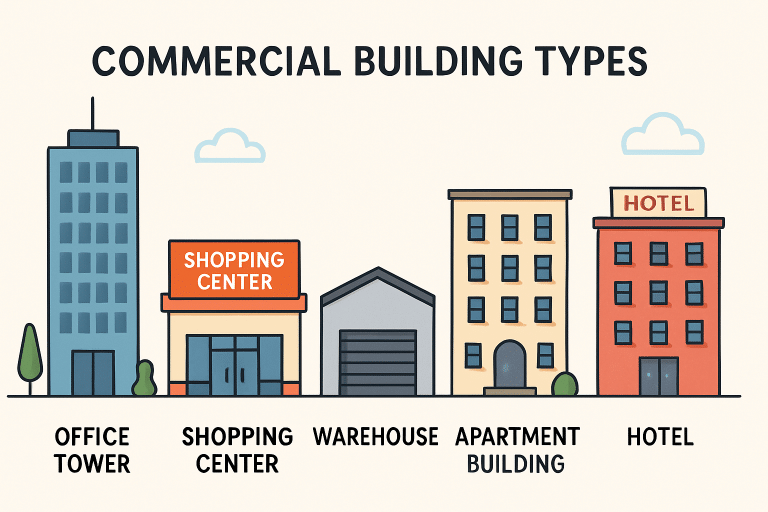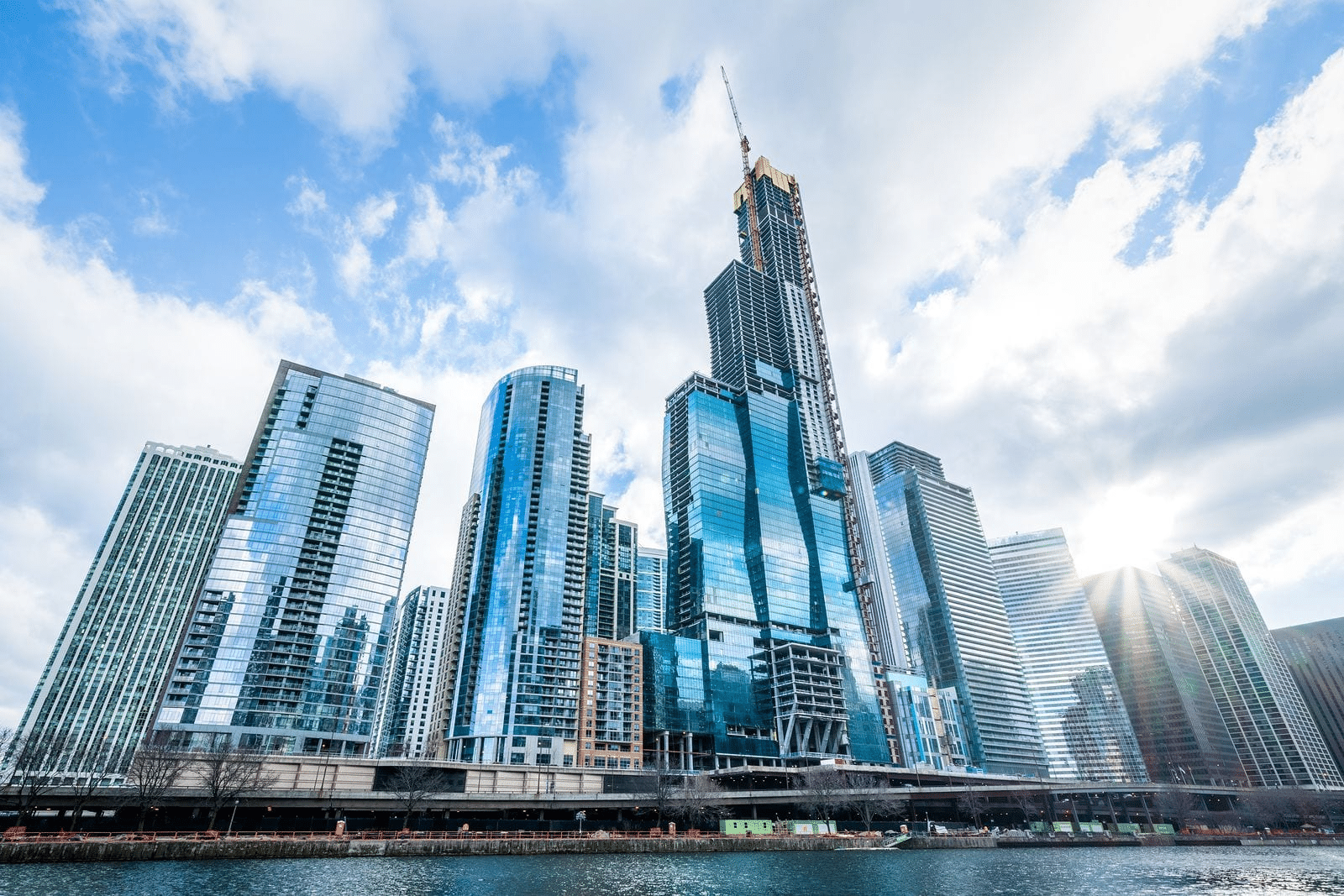Understanding Commercial Real Estate (CRE) Asset Classes: A Comprehensive Guide
Key Takeaways
- Commercial real estate comprises multiple asset classes, each with distinctive market dynamics and investment opportunities.
- Investors should tailor their strategies based on asset class nuances, local market conditions, and risk tolerance.
- Trends such as remote work, e-commerce growth, and demographic shifts are transforming how each asset class performs.
- Emerging asset types and evolving investment approaches create new avenues for portfolio diversification and value creation.
Commercial real estate (CRE) is a diverse sector that plays a vital role in the global economy, offering many opportunities for investors, developers, and businesses. Each asset class within CRE—office buildings, retail centers, industrial facilities, or multifamily housing—carries unique characteristics, benefits, and risks. Understanding these distinctions is essential for making informed decisions, whether the goal is investment, development, or strategic growth. This guide provides a comprehensive look at the major CRE asset classes, helping readers understand how each fits into the broader real estate landscape.
Commercial real estate (CRE) is a broad and multifaceted sector offering an array of property types designed to meet unique tenant needs and investment goals. Whether seeking stable rental income, long-term appreciation, or targeted value-add opportunities, selecting the right asset class is fundamental for building a resilient and diversified portfolio. Leading CRE investment firms such as Rising Realty Partners specialize in recognizing and maximizing value across these property types, adapting to rapid market shifts and emerging demand drivers.
In today’s dynamic economy, evolving trends in technology, demographics, and business operations are reshaping traditional asset classes. Investors who grasp the intricacies of each property segment not only enhance their decision-making capabilities but also improve their ability to navigate risks and seize opportunities as markets change.
Office Spaces
Office properties, ranging from compact suburban buildings to sprawling urban towers, are key fixtures in the CRE landscape. The widespread adoption of remote and hybrid work models drives landlords and investors to rethink space utilization. Vacancies have risen in many markets, and demand now centers on Class A properties offering flexibility, advanced amenities, and sustainable features.
The future of office CRE will likely involve innovative leasing structures, collaborative workspaces, and tech-driven solutions that attract both tenants and top-tier companies. As the definition of the ideal office environment evolves, property owners must adapt or risk obsolescence.

Retail Properties
Retail real estate includes enclosed malls, open-air strip centers, and single-tenant spaces. The quantum shift toward online shopping has pressured many traditional formats, but well-located and thoughtfully curated centers continue to thrive. Retailers pursuing omnichannel strategies and experiential offerings are finding success by blending digital convenience with engaging in-person experiences.
Investors now favor properties with strong anchor tenants, diverse uses—including food, entertainment, and services—and strategic positioning in densely populated areas. These features help ensure consistent foot traffic and long-term resilience, even in the face of digital disruption.
Industrial Facilities
Industrial real estate, particularly logistics hubs, warehouses, and last-mile distribution centers, has become a favored sector amid the e-commerce boom. Tenant demand is strongest for facilities near major metropolitan corridors and transportation infrastructure, supporting rapid delivery and streamlined supply chains.
Growth in this sector is underpinned by trends in global trade, supply chain restructuring, and the surging need for storage and fulfillment services. Investors appreciate the typically longer lease agreements, high occupancy rates, and lower ongoing management costs associated with well-located industrial assets.
Multifamily Housing
Multifamily properties, which include apartment complexes and condominiums, remain a cornerstone of the CRE market. Continued urbanization and changing lifestyles—especially among millennials and Generation Z—keep rental demand robust.
Favorable financing options and strong occupancy rates make this sector appealing for both institutional and individual investors. Additionally, multifamily assets tend to demonstrate durability during economic downturns, thanks to the essential nature of housing and consistent cash flows from a broad tenant base.
Hospitality Sector
The hospitality segment spans hotels, resorts, and other short-term accommodations. Sensitivity to economic cycles, business travel levels, and global events—such as the COVID-19 pandemic—creates periods of high volatility in revenue and asset values. However, when economic conditions improve, hospitality investments can deliver outsized gains due to operating leverage and pent-up demand.
Key considerations for success include property location, brand reputation, and the ability to cater to a specific customer niche or demographic. Savvy investors monitor tourism trends, local business activity, and broader travel industry indicators to inform their acquisition and operational strategies.
Specialized Asset Classes
Evolving market dynamics are fueling growth in nontraditional CRE categories. Healthcare real estate—including medical office buildings and senior housing—is expanding due to an aging population and advances in medical technology. Data centers and self-storage facilities, meanwhile, benefit from increased reliance on digital infrastructure and shifting consumer habits.
These specialized properties often face unique regulatory and operational challenges, but they may yield higher returns for investors who understand their complex risk profiles and demand drivers.
Investment Strategies and Risk Profiles
Effective CRE investment revolves around strategy selection and risk tolerance:
- Core Investments: Prioritize established, fully leased Class A properties in prime areas. These are ideal for investors seeking stable, predictable returns with lower risk exposure.
- Value-Add Investments: Focus on properties with upside potential via renovations, improved management, or repositioning. Moderate risk is balanced by potential for increased value and higher returns.
- Opportunistic Investments: Target ground-up development, major redevelopment, or distressed assets. These require deep market knowledge and risk appetite but offer the possibility of exceptional gains.
Aligning these strategies with evolving property types and market cycles allows investors to optimize returns while managing portfolio volatility.
Conclusion
The diversity of asset classes, from office towers to healthcare facilities, makes commercial real estate a dynamic and adaptable sector. As market trends reshape traditional and emerging segments, informed investors who embrace agility and innovation stand to navigate challenges and capitalize on new opportunities. With strategic partners and access to reliable market data, investors can build portfolios positioned for long-term growth and resilience.








